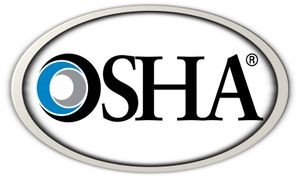The Occupation Safety and Health Agency (OSHA) recently issued a COVID-19 Emergency Temporary Standard (ETS) on vaccination and testing which became effective on November 5, 2021. OSHA requires covered employers to comply with all the provisions of the ETS by December 6, 2021, except for compliance with COVID-19 testing requirements which must be achieved by January 4, 2022. Immediately after this OSHA ETS was published, several lawsuits were filed by multiple petitioners (private and public entities) demanding that OSHA either obtain a “review” of the ETS or put the ETS “on stay” (on hold). The United States Court of Appeals for the Fifth Circuit granted a stay for the ETS and the US Department of Labor then responded to the permanent injunction request, asking the Court of the Fifth Circuit to deny the petitioners’ motion.
As of now the “stay” remains on the ETS, and until the stay is lifted, the ETS deadlines are not applicable and are subject to postponement. However, Walden is recommending all covered employers to start planning for compliance with the requirements of the ETS in order to be prepared when and if the stay is lifted.
Let’s see below the main facts about this OSHA ETS and how it will affect the covered facilities.
OSHA revised Subpart U of its General Industry (GI) Standards and added Section 29 CFR 1910.501 to incorporate the ETS in Subpart U of GI (1910). Below are the most significant subsections included in Section 1910.501 and a sampling of the most substantial requirements.
- (a). Purpose. “…to establish minimum vaccination, vaccination verification, face covering, and testing requirements to address the grave danger of COVID–19 in the workplace, …”
- (b). Scope and application.
This ETS covers “all employers with a total of 100 employees or more” but does not apply to:
- Workplaces covered under Safer Federal Workforce Task Force COVID-19 Workplace Safety; Guidance for Federal Contractors and Subcontractors;
- Employers on healthcare facilities covered by the previous healthcare OSHA ETS (now Section 1910.502)
- Employees (of covered employers) that
- are not working in a workplace where other individuals are present;
- work from home;
- work exclusively outdoors.
- (c). The ETS defines several items including “mandatory vaccination policy” which is defined as a policy requiring “Vaccination of all employees, including vaccination of all new employees as soon as practicable, other than those employees: (i) For whom a vaccine is medically contraindicated; (ii) For whom medical necessity requires a delay in vaccination; or (iii) Who are legally entitled to a reasonable accommodation under federal civil rights laws because they have a disability or sincerely held religious beliefs, practices, or observances that conflict with the vaccination requirement”.
- (d). Employer policy on vaccination. This is probably the main requirement from the ETS which demands covered employers to either:
- “establish, implement, and enforce a written mandatory vaccination policy” or
- establish, implement, and enforce “… a written policy allowing any employee not subject to a mandatory vaccination policy to choose either to be fully vaccinated against COVID–19 or provide proof of regular testing for COVID–19”
- (e). Determination of employee vaccination status.
The employer must require each vaccinated employee to provide acceptable proof of vaccination (CDC Card, Medical Record, etc.), but where the employee is unable to produce such acceptable proof, he/she can provide a signed statement (subject to criminal penalties if knowingly a false statement) attesting to the vaccination status. {…}
- (g). COVID-19 testing for employees who are not fully vaccinated
The other significant requirement from the ETS is the mandatory weekly COVID-19 testing for not fully vaccinated employees, without which the employer must keep such employees removed from the workplace until testing is provided. {…}
- (i). Face coverings
The ETS is mandating covered employers to ensure, with limited exceptions, that not fully vaccinated employees must wear a face covering when indoors and when occupying a vehicle with another employee for work related purposes.
The ETS updated the Subpart U included in the General Industry standards (Part 1910); however, the ETS also specified that the standards for Shipyard Employment (Part 1915), Marine Terminals (Part 1917), Longshoring (Part 1918) and Construction (Part 1926) incorporate by reference Section 1910.501. For Agriculture (Part 1928), Section 1910.501 is incorporated but only with respect to “(i) Agricultural establishments where eleven (11) or more employees are engaged {…} and (ii) Agricultural establishments that maintain a temporary labor camp, regardless of how many employees are engaged…”
Walden continues to track updates on this OSHA ETS and any other enforcement policies and notifications/communications from Federal, State and Local regulatory agencies that might be a result of the COVID-19 pandemic in terms of maintaining compliance with all applicable environmental, health and safety regulations.
If you think your facility might be affected by this ETS or if you have any questions about its applicability, please contact Walden Environmental Engineering at 516-624-7200.

